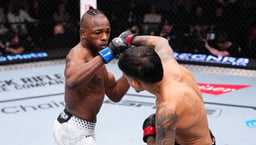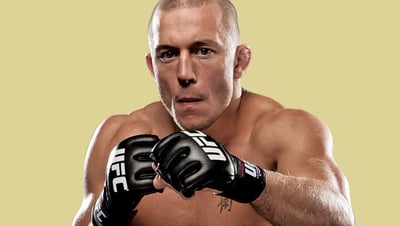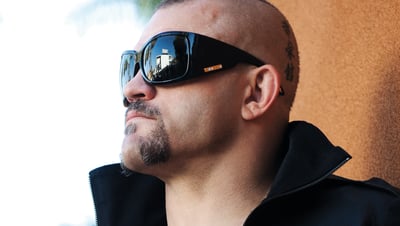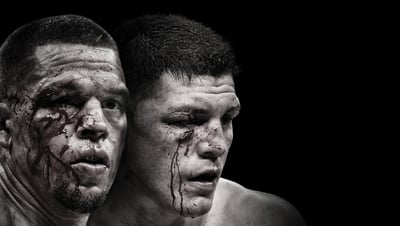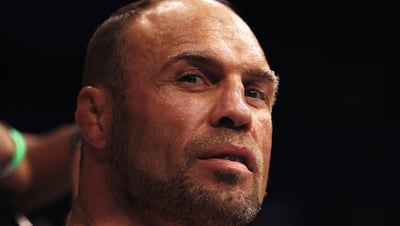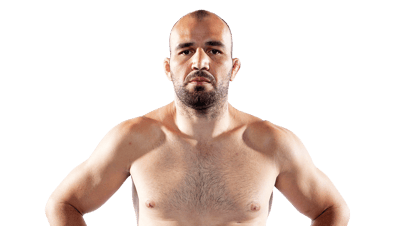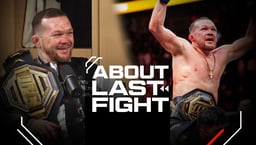
issue 218
June 2025
Before championship belts were on the line, the world's greatest fighters were locked in their own battles. Isaac Barnett delves into the gritty and inspiring MMA origin stories that forged these warriors into the legends they are today.
ALISTAIR OVEREEM – BEARING THE SCARS
Alistair Overeem was born on May 17, 1980, in Hounslow, London, England, and he was raised in a multicultural household with his Jamaican father and Dutch mother. When Overeem was six, his parents divorced, and following the separation, he moved with his mother and older brother, Valentijn, to the Netherlands, settling in Amersfoort. He found life difficult in the Netherlands at first, often bullied at school for his appearance, skin color, and voice, and as a result, he would get into fights. His brother experienced the same issues, leading him to combat sports training. When he was 15, Overeem was involved in an extreme bar fight where he was hit in the face with a glass. It caused a massive gash on his cheek, which required 20 stitches and caused his now iconic facial scar. After the incident, his brother intervened and told him he needed to be more disciplined, so he brought him to Chris Dolman's Martial Arts gym. This is where his fighting journey truly began.
In an interview on the Kiiyon Kimura YouTube channel, Overeem said: “My brother took me to the gym, and it was not a choice. He told me that I needed to learn to defend myself and develop discipline.”
Alistair did not enjoy his training initially because he was small compared to most athletes training at the gym, but over time, as he improved, he began to enjoy it.
“He made me come 2/3 times a week and I didn’t like it at all because I was a little skinny guy around all these big guys, but about a year on I started to like it, and I started to kick other people’s asses.”
He trained for four years, honing his skills in kickboxing, judo, and wrestling, until he was 19. One day, he met and trained with Bas Rutten in the gym. This encounter and his older brother’s lifestyle inspired him to quit his job on a conveyor belt line to pursue fighting full-time. By then, he had already had one professional K-1 kickboxing fight and decided to compete in both MMA and kickboxing simultaneously. In the first two years of his professional career, he went 10-3 in MMA and had two kickboxing fights. This earned him a call-up to Pride, where he won and finished his first six fights.
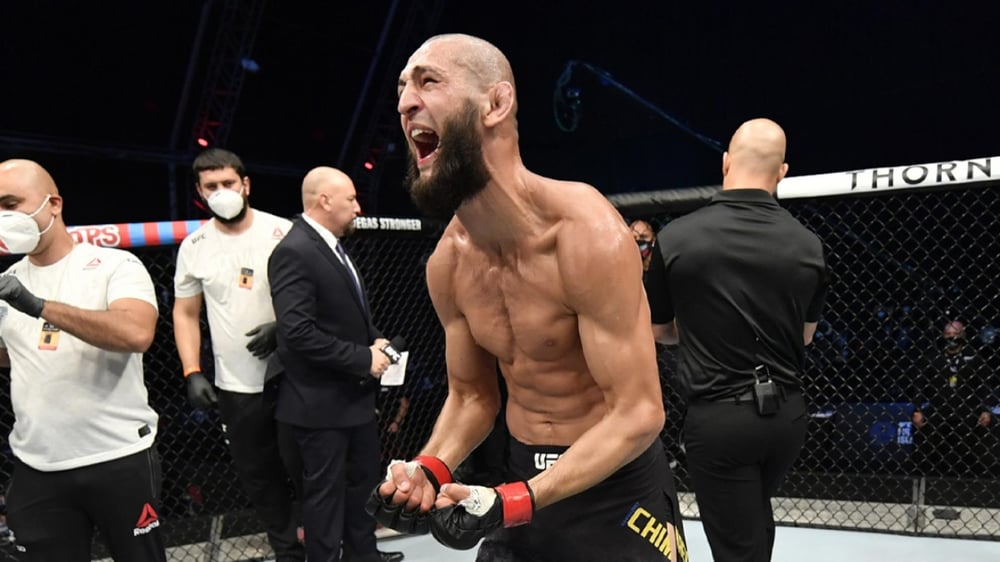
KHAMZAT CHIMAEV - THE WAR BORN WOLF
Khamzat “Borz” Chimaev was born on May 1, 1994, in Gvardeyskoye, Chechnya, during the First Chechen War (1994–1996). His early life was marked by poverty and instability. Growing up with two brothers and two sisters, Chimaev’s mother was the primary caregiver while his father worked away. Food was often scarce, and sometimes there wasn't enough for his mother to eat.
“She always thought about us while we were young,” Chimaev told ESPN MMA. “We didn’t understand why she would give food to us and wait until we were finished, but then she would eat what was left,”.
The Second Chechen War (1999–2009) further shaped his childhood and haunted him as he grew older.
“The things I’ve seen when I was growing up were hard, and sometimes things can go wrong inside, you know? You get angry inside, and you can’t control it.”
His older brother, Artur, a competitive wrestler, introduced him to the sport to help keep him out of trouble and keep his mind away from the atrocities they’d suffered daily.
“If it weren’t for my big brother, maybe I would have been in jail somewhere because sometimes I'm a crazy guy, and I need someone to stop me.”
Chimaev began wrestling at five and quickly stood out for his aggression and dedication. In 2013, after the war, the family emigrated to Sweden to join Artur. There, Chimaev continued wrestling and became a three-time Swedish national champion in freestyle wrestling. He worked in a poultry factory and as a nightclub security guard in Kalmar. One night, while working, he watched Conor McGregor’s fight against José Aldo Jr. and had a revelation.
“I was working, and I watched the Aldo fight. I thought to myself, if he's (McGregor) making all the money fighting, why not me? I was mentally stronger than him, and I was physically bigger than him. At that time, if I met him outside of the cage, I would break him. I believed in myself.”
Although his brother wanted him to continue working to support the family, his mother encouraged him to pursue his dream. He quit both jobs and moved to Stockholm to train full-time at Allstars Training Centre alongside UFC veterans like Alexander Gustafsson and Ilir Latifi. Chimaev quickly impressed coaches with his work ethic, going 3-0 as an amateur in just seven months (2017–2018). He turned professional in 2018, racking up a 6-0 record with all finishes in under two years. His dominance earned him a UFC contract, launching one of the most talked-about careers in recent MMA history.

ROBERT WHITTAKER – SOMETHING TO PROVE
Robert ‘The Reaper’ Whittaker was born on December 20, 1990, in Ōtāhuhu, Auckland, New Zealand, and lived with his father, Jack Whittaker, and his mother, Jewel Whittaker, who is of Māori and Samoan heritage. Shortly after his birth, Whittaker’s family relocated to Australia, where he was raised in the suburbs of Sydney, in a lifestyle that was not particularly privileged.
Speaking to Improvementality, Whittaker said: “I grew up in housing commission, so I was quite poor, and I used to get called ‘Houso’, which was a teasing word. If people wanted to get under my skin, they would call me a ‘Houso’, and that would be it. I would be fighting. I didn’t get into a lot of fights, I didn’t go looking for fights, but I didn’t like being called a ‘Houso’.”
At seven, his father enrolled him and his brother in a Goju-ryu karate school.
The goal was to instill discipline, respect, and self-defence skills, as his father was in the Australian army, but also because his father wanted him to be able to catch public transport by himself, and he didn’t like the idea of his son not being able to defend himself. Whittaker trained in karate for eight years, eventually earning his black belt. He was also a talented rugby league player, having been accepted into the Cronulla Sharks' development academy, a professional rugby league club. When he was allowed to switch sports to rugby completely or quit martial arts, Whittaker decided to continue his martial arts journey. His family moved houses, which meant his karate gym was too far away, so he transitioned to Hapkido under his new coach, Henry Perez. Not long after, Perez converted his gym into an MMA facility, which Whittaker embraced. Whittaker turned professional at 19 and had 11 fights in four years, with a record of 9-2.
Perez believed he was ready for the big leagues, so he put Whittaker forward for The Ultimate Fighter “The Smashes”. The season was supposed to emulate the Ashes rivalry between England and Australia, where the English fighters could compete against the Australians. Whittaker won his first two fights on the show by round one KO to earn his spot on the final, which he won by unanimous decision that eventually saw him get the gold belt.
...


